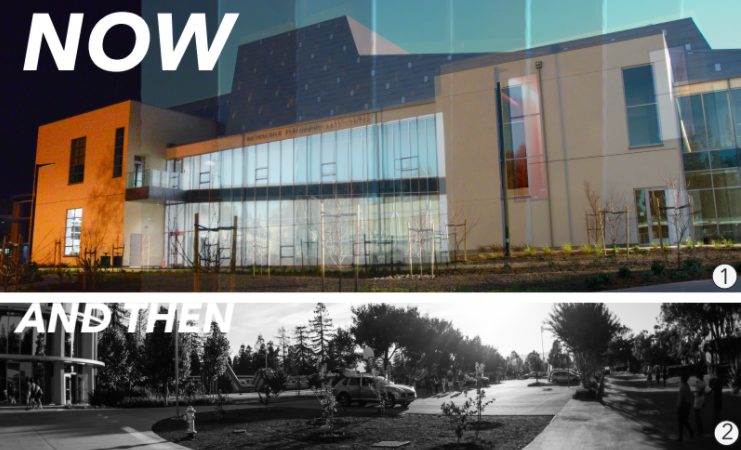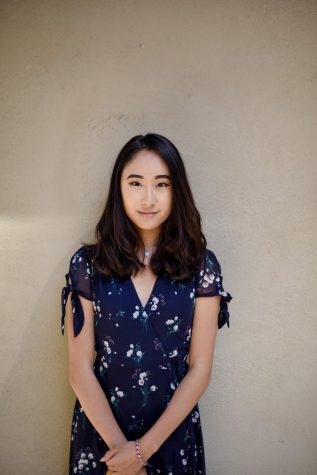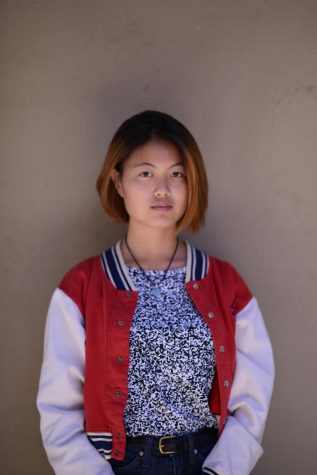Rothschild Performing Arts Center opens, inaugurates new era for arts
The RPAC contains a green room, dressing rooms, spaces for orchestra and band practice and the Patil theater. Alumni, staff and students alike gathered for its grand opening last Friday.
February 6, 2018
After a year and a half of construction, the ribbon-cutting ceremony held last Friday opened the Rothschild Performing Arts Center (RPAC) to student use, with many performing arts classes moving into the new rooms this week.
Attendees of the ribbon-cutting ceremony were given the opportunity to participate in a student-guided tour of the various spaces and to view a presentation on the theater’s features, which was accompanied by alumni performances.
The Patil Theater will feature 463 seats, a professional fly tower system, an adjustable hydraulic orchestra pit, a control booth for lighting and sound and soundproof walls to enhance the quality of acoustics during performances.
“I think the thing that is most important to note is the actual theater itself because we’ve never had an actual theater,” performing arts director Laura Lang-Ree said. “The sound in there is remarkable, and I think that’s something easy that you can see as a benefit to every person and group and ensemble that’s going to touch that stage.”
RPAC, which cost $45 million, also includes four classrooms, each outfitted with a recording and projector system; several soundproof practice rooms; two dressing rooms; a scene shop; a student art gallery and a 15 by 35 feet screen in the front lobby.
Students and faculty can use the screen to display performance videos and announcements.
“This is better than a lot of the performing houses and professional houses I’ve seen this year,” facilities director Mike Bassoni said. “Just the sound quality, the level of detail—it’s a very special class.”
RPAC to host first show in February
The lights of the newly completed RPAC radiate through the glass walls of the lobby and illuminate the courtyard outside, inviting visitors to explore the 50,000 square foot-space. Crowds of students, faculty, families and alumni alike admire the building, which has been under construction for a year and a half.
Upon entering the lobby, visitors are immediately greeted with a prominent video screen display that spans the entire main wall. Double doors on either side of the screen open into the Patil Theater, a 463-seat auditorium outfitted with a professional fly tower system, a hydraulic orchestra pit, a control booth for lighting and sound and walls designed to amplify the acoustics of the space.
Behind the stage is a corridor lined with doors to classrooms and a doorway to the scene shop at the end. Bright red staircases tucked into the side hallways lead up to two more classrooms and a row of lockers designed specifically for instrument storage.
These features of the Rothschild Performing Arts Center will offer students the opportunity to work with larger spaces during rehearsals and more advanced lighting and sound technology during performances. In addition, students and faculty can use the video screen in the lobby to project different forms of media, ranging from digital artwork to daily announcements.
Classes have begun moving into the new space today and will continue their transition throughout the week. Vocal music teachers Susan Nace and Jennifer Sandusky, theater teacher Jeffrey Draper, instrumental music teacher Chris Florio and performing arts director Laura Lang-Ree have been given classrooms in the Rothschild Performing Arts Center.
Technical theater classes will also be held in the new center to allow students to familiarize themselves with the equipment of the Patil Theater.
“I think if you want to be really specific about something brand new that has not been there before, it would be for our technical theater students because they haven’t had the toys to play with,” Lang-Ree said. “They haven’t had a fly space, they haven’t had things to come in and out, they haven’t had any of that opportunity or the opportunities that they’re going to have with the catwalks and hanging lights and learning how to do the sound—that’s brand new.”
While ideas for the building design first emerged in 1998, the first designs were officially submitted in 2014. Construction began in the spring of 2016 and continued throughout the past school year into this winter, calling for various changes in parking and traffic flow in the morning and after school.
Performing arts department faculty have been given reserved parking sports near the Rothschild Performing Arts Center, the parking lot for which also includes spaces for visitors.
The first performance in the Patil Theater will be the annual United Voices concert on Feb. 23, and the first mainstage performance will be the spring musical “42nd Street” in April, followed by “Our Town” in the fall.
“I’m very excited to perform in ‘Our Town’ because I know it’s going to be amazing having so many more people able to watch the fall play and having so much more space to work with,” Conservatory student Hannah Lak (11) said.
With the completion of the center, students have been given two different drop-off paths in the morning to facilitate traffic flow, one running through the back parking lot by Main Hall and one passing by the athletics center and the Rothschild Performing Arts Center.
This piece was originally published in the pages of the Winged Post on February 5, 2018.


















![“[Building nerf blasters] became this outlet of creativity for me that hasn't been matched by anything else. The process [of] making a build complete to your desire is such a painstakingly difficult process, but I've had to learn from [the skills needed from] soldering to proper painting. There's so many different options for everything, if you think about it, it exists. The best part is [that] if it doesn't exist, you can build it yourself," Ishaan Parate said.](https://harkeraquila.com/wp-content/uploads/2022/08/DSC_8149-900x604.jpg)




![“When I came into high school, I was ready to be a follower. But DECA was a game changer for me. It helped me overcome my fear of public speaking, and it's played such a major role in who I've become today. To be able to successfully lead a chapter of 150 students, an officer team and be one of the upperclassmen I once really admired is something I'm [really] proud of,” Anvitha Tummala ('21) said.](https://harkeraquila.com/wp-content/uploads/2021/07/Screen-Shot-2021-07-25-at-9.50.05-AM-900x594.png)







![“I think getting up in the morning and having a sense of purpose [is exciting]. I think without a certain amount of drive, life is kind of obsolete and mundane, and I think having that every single day is what makes each day unique and kind of makes life exciting,” Neymika Jain (12) said.](https://harkeraquila.com/wp-content/uploads/2017/06/Screen-Shot-2017-06-03-at-4.54.16-PM.png)








![“My slogan is ‘slow feet, don’t eat, and I’m hungry.’ You need to run fast to get where you are–you aren't going to get those championships if you aren't fast,” Angel Cervantes (12) said. “I want to do well in school on my tests and in track and win championships for my team. I live by that, [and] I can do that anywhere: in the classroom or on the field.”](https://harkeraquila.com/wp-content/uploads/2018/06/DSC5146-900x601.jpg)
![“[Volleyball has] taught me how to fall correctly, and another thing it taught is that you don’t have to be the best at something to be good at it. If you just hit the ball in a smart way, then it still scores points and you’re good at it. You could be a background player and still make a much bigger impact on the team than you would think,” Anya Gert (’20) said.](https://harkeraquila.com/wp-content/uploads/2020/06/AnnaGert_JinTuan_HoHPhotoEdited-600x900.jpeg)

![“I'm not nearly there yet, but [my confidence has] definitely been getting better since I was pretty shy and timid coming into Harker my freshman year. I know that there's a lot of people that are really confident in what they do, and I really admire them. Everyone's so driven and that has really pushed me to kind of try to find my own place in high school and be more confident,” Alyssa Huang (’20) said.](https://harkeraquila.com/wp-content/uploads/2020/06/AlyssaHuang_EmilyChen_HoHPhoto-900x749.jpeg)









